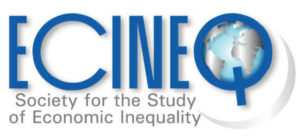Fiscal Incidence, Fiscal Mobility and the Poor
Working Paper 2012-265
Abstract
Taxes and transfers can have significant impacts on poverty and inequality. All standard measures are by definition anonymous in the sense that we do not know the identity of winners and losers. That a given combination of taxes and transfers makes some of the poor poorer, however, may be important information to incorporate into a fiscal incidence analysis. The directional mobility literature provides a useful framework to identify which individuals are adversely/favorably impacted by a particular policy. This paper introduces a “fiscal mobility matrix” to identify winners and losers. We show that taxes and transfers can lower inequality and poverty (including the severity of poverty) but still make a subgroup of the poor worse off. We use Brazilian data to illustrate how indirect taxes make around 11 percent of the non-poor poor, 15 percent of the moderate poor extremely poor, and 4 percent of the extremely poor “ultra-poor” despite any cash transfers they receive, even when standard poverty and inequality indicators decline and overall taxes are progressive.
Authors: Nora Lustig, Sean Higgins.
